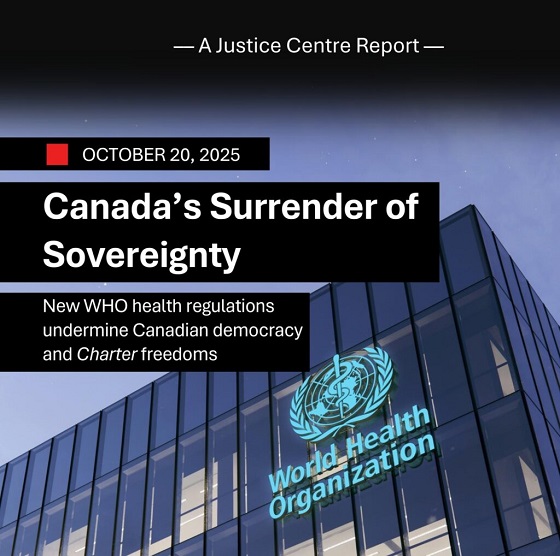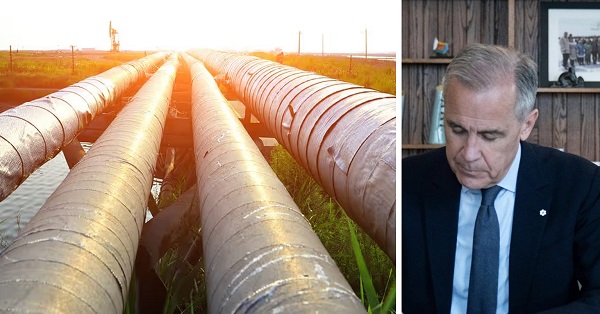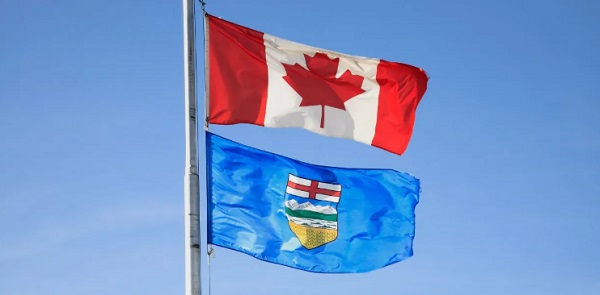Uncategorized
What is ‘productivity’ and how can we improve it

From the Fraser Institute
Earlier this year, a senior Bank of Canada official caused a stir by describing Canada’s pattern of declining productivity as an “emergency,” confirming that the issue of productivity is now in the spotlight. That’s encouraging. Boosting productivity is the only way to improve living standards, particularly in the long term. Today, Canada ranks 18th globally on the most common measure of productivity, with our position dropping steadily over the last several years.
Productivity is the amount of gross domestic product (GDP) or “output” the economy produces using a given quantity and mix of “inputs.” Labour is a key input in the production process, and most discussions of productivity focus on labour productivity. Productivity can be estimated for the entire economy or for individual industries.
In 2023, labour productivity in Canada was $63.60 per hour (in 2017 dollars). Industries with above average productivity include mining, oil and gas, pipelines, utilities, most parts of manufacturing, and telecommunications. Those with comparatively low productivity levels include accommodation and food services, construction, retail trade, personal and household services, and much of the government sector. Due to the lack of market-determined prices, it’s difficult to gauge productivity in the government and non-profit sectors. Instead, analysts often estimate productivity in these parts of the economy by valuing the inputs they use, of which labour is the most important one.
Within the private sector, there’s a positive linkage between productivity and employee wages and benefits. The most productive industries (on average) pay their workers more. As noted in a February 2024 RBC Economics report, productivity growth is “essentially the only way that business profits and worker wages can sustainably rise at the same time.”
Since the early 2000s, Canada has been losing ground vis-à-vis the United States and other advanced economies on productivity. By 2022, our labour productivity stood at just 70 per cent of the U.S. benchmark. What does this mean for Canadians?
Chronically lagging productivity acts as a drag on the growth of inflation-adjusted wages and incomes. According to a recent study, after adjusting for differences in the purchasing power of a dollar of income in the two countries, GDP per person (an indicator of incomes and living standards) in Canada was only 72 per cent of the U.S. level in 2022, down from 80 per cent a decade earlier. Our performance has continued to deteriorate since 2022. Mainly because of the widening cross-border productivity gap, GDP per person in the U.S. is now $22,000 higher than in Canada.
Addressing Canada’s “productivity crisis” should be a top priority for policymakers and business leaders. While there’s no short-term fix, the following steps can help to put the country on a better productivity growth path.
- Increase business investment in productive assets and activities. Canada scores poorly compared to peer economies in investment in machinery, equipment, advanced technology products and intellectual property. We also must invest more in trade-enabling infrastructure such as ports, highways and other transportation assets that link Canada with global markets and facilitate the movement of goods and services within the country.
- Overhaul federal and provincial tax policies to strengthen incentives for capital formation, innovation, entrepreneurship and business growth.
- Streamline and reduce the cost and complexity of government regulation affecting all sectors of the economy.
- Foster greater competition in local markets and scale back government monopolies and government-sanctioned oligopolies.
- Eliminate interprovincial barriers to trade, investment and labour mobility to bolster Canada’s common market.
Uncategorized
Cost of bureaucracy balloons 80 per cent in 10 years: Public Accounts

The cost of the bureaucracy increased by $6 billion last year, according to newly released numbers in Public Accounts disclosures. The Canadian Taxpayers Federation is calling on Prime Minister Mark Carney to immediately shrink the bureaucracy.
“The Public Accounts show the cost of the federal bureaucracy is out of control,” said Franco Terrazzano, CTF Federal Director. “Tinkering around the edges won’t cut it, Carney needs to take urgent action to shrink the bloated federal bureaucracy.”
The federal bureaucracy cost taxpayers $71.4 billion in 2024-25, according to the Public Accounts. The cost of the federal bureaucracy increased by $6 billion, or more than nine per cent, over the last year.
The federal bureaucracy cost taxpayers $39.6 billion in 2015-16, according to the Public Accounts. That means the cost of the federal bureaucracy increased 80 per cent over the last 10 years. The government added 99,000 extra bureaucrats between 2015-16 and 2024-25.
Half of Canadians say federal services have gotten worse since 2016, despite the massive increase in the federal bureaucracy, according to a Leger poll.
Not only has the size of the bureaucracy increased, the cost of consultants, contractors and outsourcing has increased as well. The government spent $23.1 billion on “professional and special services” last year, according to the Public Accounts. That’s an 11 per cent increase over the previous year. The government’s spending on professional and special services more than doubled since 2015-16.
“Taxpayers should not be paying way more for in-house government bureaucrats and way more for outside help,” Terrazzano said. “Mere promises to find minor savings in the federal bureaucracy won’t fix Canada’s finances.
“Taxpayers need Carney to take urgent action and significantly cut the number of bureaucrats now.”
Table: Cost of bureaucracy and professional and special services, Public Accounts
| Year | Bureaucracy | Professional and special services |
|
$71,369,677,000 |
$23,145,218,000 |
|
|
$65,326,643,000 |
$20,771,477,000 |
|
|
$56,467,851,000 |
$18,591,373,000 |
|
|
$60,676,243,000 |
$17,511,078,000 |
|
|
$52,984,272,000 |
$14,720,455,000 |
|
|
$46,349,166,000 |
$13,334,341,000 |
|
|
$46,131,628,000 |
$12,940,395,000 |
|
|
$45,262,821,000 |
$12,950,619,000 |
|
|
$38,909,594,000 |
$11,910,257,000 |
|
|
$39,616,656,000 |
$11,082,974,000 |
Uncategorized
New report warns WHO health rules erode Canada’s democracy and Charter rights

The Justice Centre for Constitutional Freedoms has released a new report titled Canada’s Surrender of Sovereignty: New WHO health regulations undermine Canadian democracy and Charter freedoms. Authored by Nigel Hannaford, a veteran journalist and researcher, the report warns that Canada’s acceptance of the World Health Organization’s (WHO) revised International Health Regulations (IHR) represents a serious erosion of national independence and democratic accountability.
The IHR amendments, which took effect on September 19, 2025, authorize the WHO Director-General to declare global “health emergencies” that could require Canada to follow directives from bureaucrats in Geneva, bypassing the House of Commons and the will of Canadian voters.
The WHO regards these regulations as “binding,” despite having no ability or legal authority to impose such regulations. Even so, Canada is opting to accept the regulations as binding.
By accepting the WHO’s revised IHR, the report explains, Canada has relinquished its own control over future health crises and instead has agreed to let the WHO determine when a “pandemic emergency” exists and what Canada must do to respond to it, after which Canada must report back to the WHO.
In fact, under these International Health Regulations, the WHO could demand countries like Canada impose stringent freedom-violating health policies, such as lockdowns, vaccine mandates, or travel restrictions without debate, evidence review, or public accountability, the report explains.
Once the WHO declares a “Pandemic Emergency,” member states are obligated to implement such emergency measures “without delay” for a minimum of three months.
Importantly, following these WHO directives would undermine government accountability as politicians may hide behind international “commitments” to justify their actions as “simply following international rules,” the report warns.
Canada should instead withdraw from the revised IHR, following the example of countries like Germany, Austria, Italy, Czech Republic, and the United States. The report recommends continued international cooperation without surrendering control over domestic health policies.
Constitutional lawyer Allison Pejovic said, “[b]y treating WHO edicts as binding, the federal government has effectively placed Canadian sovereignty on loan to an unelected international body.”
“Such directives, if enforced, would likely violate Canadians’ Charter rights and freedoms,” she added.
Mr. Hannaford agreed, saying, “Canada’s health policies must be made in Canada. No free and democratic nation should outsource its emergency powers to unelected bureaucrats in Geneva.”
The Justice Centre urges Canadians to contact their Members of Parliament and demand they support withdrawing from the revised IHR to restore Canadian sovereignty and reject blind compliance with WHO directives.
-

 Energy2 days ago
Energy2 days agoCanadians will soon be versed in massive West Coast LPG mega-project
-

 Alberta2 days ago
Alberta2 days agoKeynote address of Premier Danielle Smith at 2025 UCP AGM
-

 Daily Caller2 days ago
Daily Caller2 days agoTom Homan Predicts Deportation Of Most Third World Migrants Over Risks From Screening Docs
-

 COVID-192 days ago
COVID-192 days agoThe dangers of mRNA vaccines explained by Dr. John Campbell
-

 Artificial Intelligence2 days ago
Artificial Intelligence2 days ago‘Trouble in Toyland’ report sounds alarm on AI toys
-

 National1 day ago
National1 day agoMedia bound to pay the price for selling their freedom to (selectively) offend
-

 C2C Journal1 day ago
C2C Journal1 day agoLearning the Truth about “Children’s Graves” and Residential Schools is More Important than Ever
-

 Alberta1 day ago
Alberta1 day agoNew era of police accountability






